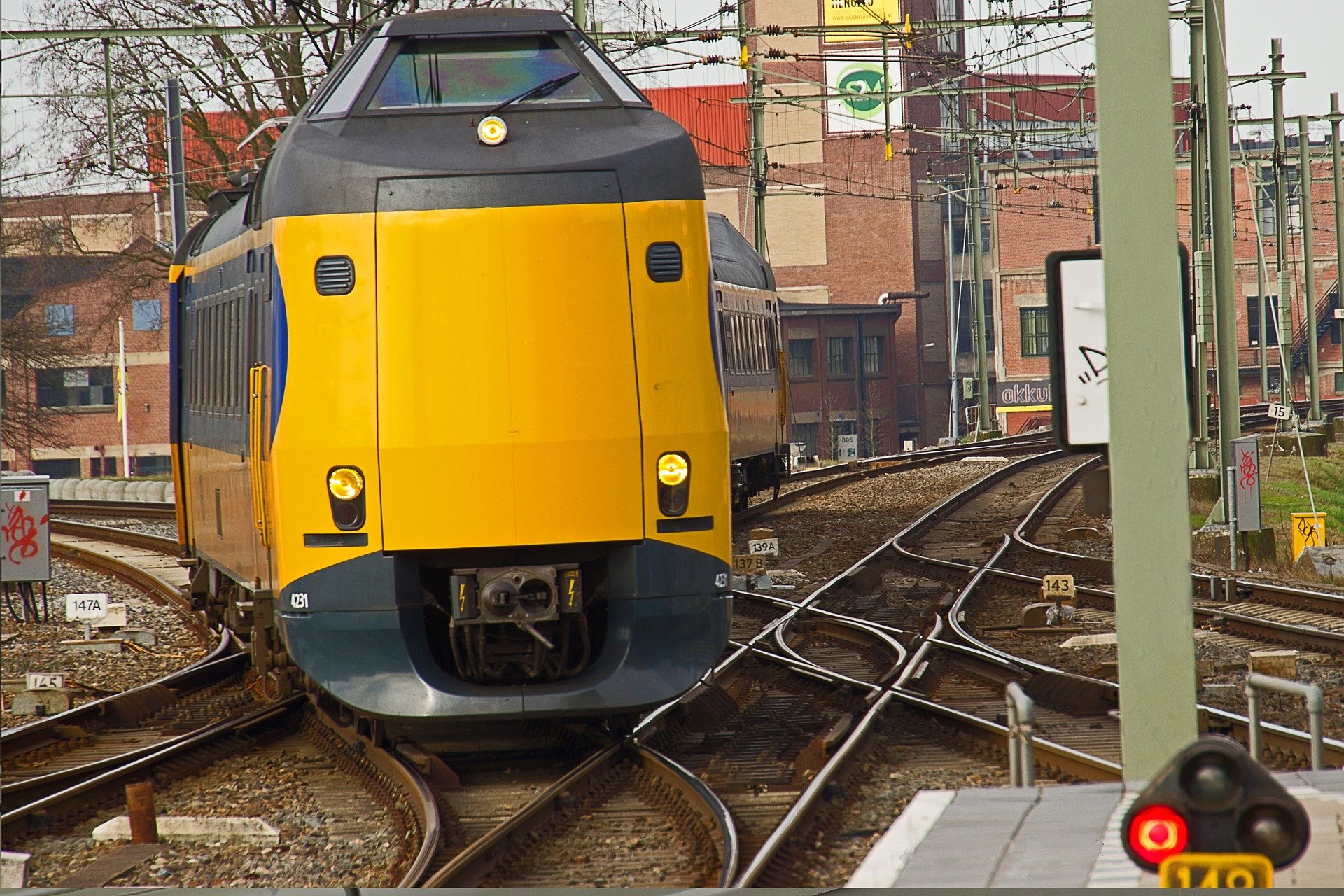
Complaints about late trains in the Netherlands are often misplaced. It may be tough to swallow for those who love to complain but – let’s face it – trains are on-time most of the year. In 2020, only 2.4 percent of trains were cancelled. And regional train lines? They’re punctual over 95 percent of the time.
This all changes in autumn when leaves begin to fall and train critics find new ammo. Rain and falling debris cover the tracks, creating a sludge that is slippery for trains.
“It can be compared to pouring motor oil on rails,” says Hamish Geddes, CEO of the start-up, Lenz Labs.
Lenz Labs (Glasgow, Scotland) recently created the Traction Hub to fix this issue. It is a retrofittable braking technology that fits onto the face of a wheel. The Traction Hub uses electromagnetics to create extra friction between the wheel and rail. When a train encounters bad weather and falling leaves, the driver can engage the Traction Hub with the click of a button. Trains then get an extra boost of friction, allowing them to maintain speeds and get to stations on time.
The problem with late trains
To be clear, the issue with low adhesion on rails is not one of safety. Train brakes work fine in normal conditions and trains will simply slow down in bad weather. Efficiency and punctuality are traded for safety and the Dutch economy bears the brunt.
“It’s one of the major issues we’re trying to solve,” says Aldert Baas, Spokesperson for ProRail.
Trains as a means of transportation are not going anywhere. They might not be as glamorous as other modes, but trains are sustainable and heavily relied upon. The issue of train punctuality is, then, prudent beyond good coffee table conversation. Dutch safety regulations force train conductors to cut their speed by half in some cases. This means missed meetings for passengers and fines for the NS.
The current solution is to spray a substance called Sandite on the tracks, which is a mixture of anti-freeze and sand. In 2019 alone, a total of 89350 litres of Sandite was sprayed on Dutch railways. Where regulations can have a larger impact is with freight trains carrying heavy cargo. Roughly 30 percent of freight trains arrive late and have weight limits on the amount of goods carried. This is largely due to low adhesion on tracks and can result in sparks flying when overweight trains try to stop.
But if these trains could go faster and carry more cargo, less trains would be needed to move the same freight. With new braking technology, trains could become even more practical and sustainable.
Born out of Hyperloop
Geddes, 23, met his co-founders for Lenz Labs while working on Hyperloop for SpaceX. In 2016, he and his team built the first Hyperloop pod in the UK while at the University of Edinburgh. Every year they would test a new design for the pod as part of the Hyperloop Pod competition. And every year, SpaceX engineers would give them feedback for how to improve.
“By the time we built something that was capable of magnetic propulsion and magnetic levitation similar to the Maglev, we pioneered some great technologies,” explains Geddes.
Hyperloop is technology that could revolutionize freight and passenger transportation in its own right. It is also a long way out before anyone will be riding on it. Geddes and his team looked for a problem they could solve right away and landed on low adhesion on rails. According to Geddes, the UK economy loses about 400 million euros per year due to this issue. They submitted an initial design for the Traction Hub and won a grant from the UK government. Lenz Labs has been working to bring this idea to market ever since.
Smart rails
“We want maximum impact from this,” says Geddes on his plans for the future. Lenz Labs are looking to license the tech worldwide (including the Netherlands). This also goes beyond train brakes and into creating digital rail systems. Pilotor Traction is their second product that will allow trains to predict hazards on rails. It means that train companies will be able to optimize their scheduling and make trains even more efficient.
Their aim with this system is also to make trains ‘smart’ by detecting when parts need to be replaced before they break down. They plan to test the Traction Hub on national infrastructure by the end of the year – meaning we will soon need something new to complain about.

